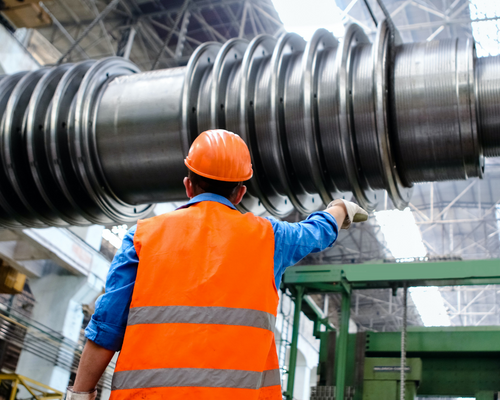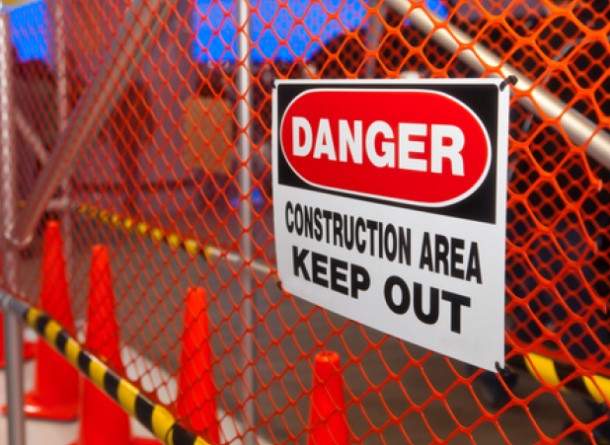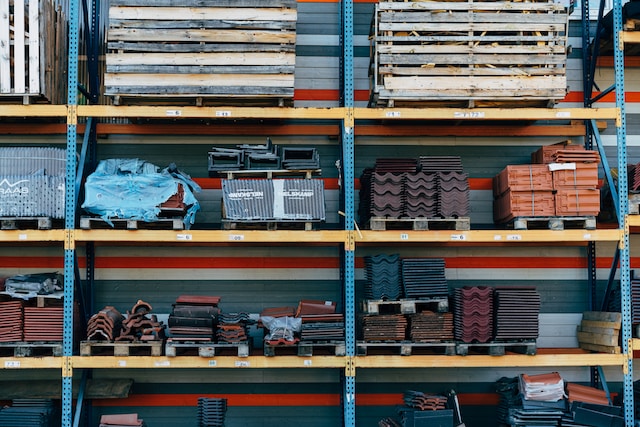Search This Blog
Most Popular
Understanding Construction Project Phases
March 03, 2025
Sieve Analysis of Aggregates - ASTM Standard
August 11, 2021
Categories
- Building Construction (83)
- Building Materials (82)
- Columns (2)
- Concrete Beam (3)
- Concrete Construction Techniques (4)
- Concrete Mix Design (9)
- Concrete Repair (14)
- Concrete Slab (10)
- Construction Equipment (16)
- Construction News (7)
- Design of Structures (15)
- Engineering Drawing (1)
- Estimation (3)
- Geotechnical engineering (26)
- Highway Engineering (11)
- Innovations (30)
- Material Testing (9)
- Matrix Analysis of Structures (2)
- Mechanical Engineering (3)
- Strength of Materials (2)
- Structural Analysis (17)
- Structural Design (21)
- Structures (17)
- Transportation Engineering (9)
Safety Tips to be Followed at a Construction Site
Neenu
May 09, 2023
Construction sites are high-risk work environments and workplace safety practices must be followed meticulously to ensure the safety and well-being of workers. Injuries sustained on construction sites can be fatal.
Construction safety practices should be continued even after the project is completed, and the workers have gone home. All parties should ensure that the right equipment and quality materials are used so that safety risks are avoided long after the project is over.
Thus, it is extremely important to provide a safe and efficient work environment for construction workers. It is your responsibility as an employer to overcome the temptation to cut corners to save costs because it is in the best of interests for all to follow safety precautions.
This blog post emphasizes the importance of workplace safety practices in construction sites. We provide practical tips for employers to ensure a safe environment, including safety training, PPE, risk management, site security, clear signage, safeguards, proper tool organization, prompt issue reporting, chemical storage compliance, electrical safety, and emergency response plans.
1. Safety Training
Ensure that your general contractors complete a site-specific induction training and hold a current white card before work commences on site, and familiarize new construction workers with site operations.
Instructions for emergency management should be provided to them, and any high-risk areas pointed out. Health and safety instructions to the workforce can be relayed through Toolbox talks conducted before commencing work on a regular basis.
2. Wear Personal Protection Equipment (PPE)
Always required PPE must be worn by all visitors and workers to reduce exposure to various hazards on the worksite. Goggles, gloves, helmets, boots, ear muffs or plugs, and high visibility vests and suits are some of the common PPEs required to be worn.
An employer must provide PPE such as high vests, safety goggles, and safety harnesses to construction site workers working on heights.
3. Minimize and Manage Risk
Conduct regular safety audits and have procedures in place to report, assess and address potential risks. This way many common safety issues can be avoided. For example, if there are any hazardous chemicals on-site, it would be worth installing safety measures such as bunded storage to contain any spills or leaks.
4. Site security
Site access should be restricted to protect equipment from damage or theft. To protect pedestrians from potential construction hazards, adequate security both within and outside work hours should be provided by supervision or allowing entry to only authorized site visitors. Contractors will also be protected from liability and negligence by observing strict security and safety protocols in the case of a safety incident or security breach.
5. Safe Work Method Assessment
Before work commences, a Safe Work Method Statement (SWMS) must be prepared for all high-risk construction projects. Any potential safety issues, the scope of work, prevention, and management of risks must be enlisted by SWMS. Construction work must not start until SWMS standards are met, according to law.
6. Clear Signage Onsite
The site SWMS should be prominently displayed at the construction site, enlisting all safety protocols, a 24-hour emergency contact number, a site map, and directions to the site office. Site amenities such as entry and exit points, toilets, first aid, and emergency fire equipment should be indicated on visible signage.
Safety signs should be appropriately placed around the site to enable the management to warn and create health and safety awareness for employees and visitors. Construction workers should be familiarized with the construction site safety tips, and different signs such as warning signs, mandatory signs, safe condition signs, prohibition signs, and firefighting equipment signs.
7. Set up Safeguards
To strengthen pedestrian safety at high traffic points, separate entry, and exit points should be established for heavy machinery and vehicle access.
Engineering controls such as fences, barriers, and safeguards should be set up to keep people away from hazardous areas with high-voltage electricity, or chemicals with toxic fumes.
8. Organize and Store Tools
Lights and power tools should be left unplugged, and no tools should be left lying around. Organizing and storing tools in their rightful place will prevent them from getting damaged, causing injury to workers, and allow easier navigation.
Do pre-checks on tools and equipment to be used to ensure that they are free of defect or damage, before the commencement of work.
9. Report Issues Promptly
Workers must report defects and near misses on-site to the management as soon as they are detected, as they can only be resolved when the management is made aware of them. The sooner the issues are reported, the fewer the chances of them worsening, and causing accidents or further damage.
10. Chemical Storage Compliance
To minimize fires, asphyxiation, explosions, pollution, and chemical injury on worksites, the chemicals must be stored very carefully. Outdoor storage solutions such as explosive storage cabinets that are high quality and compliant must be used to segregate chemicals and reduce spillage.
The chemicals must be handled properly and any potential hazards involving fires, explosions, chemicals, and respiratory problems should be communicated immediately. Employees must be trained to use Safety Data Sheets (SDS) and follow all SDS instructions for chemicals. Written spill control plans must be created, cleanup kits must be installed near chemical areas, and employees must be trained in cleanup procedures.
11. Electrical Safety
Before working on new or existing energized electrical circuits, always shut off power and attach grounds. Damaged electrical cords and cables must be replaced immediately. When using electricity, never bypass protective systems.
Always use extension cords with grounding prongs. Equipment, scaffolds, and ladders must be kept away from overhead power lines. Multiple plug adapters must never be used.
12. Misuse of Equipment
Misuse of a tool or equipment usually leads to accidents. Using makeshift tools should be avoided and the correct tool should be used to do the job faster and safer. Equipment and tools should be inspected regularly and fixes and repairs should be applied promptly. As soon as it is discovered, remove or label defective and malfunctioning equipment.
After vibrations and rainstorms, immediate inspection of equipment such as trenches and scaffolding should be performed and slippery conditions on stairways fixed promptly. The equipment and tools should be chosen and used correctly.
Strong scaffolds assembled on solid footings and able to hold at least four times the maximum intended load without shifting or displacing, must be used. Never exceed the load capacities of scaffolding, ladders, trenches, cranes, and stairways. Always, use the correct ladder for the job. The use of metal ladders near overhead power lines or for electrical work must be avoided.
13. Emergency Response Plan
An Emergency Response Plan directs the workforce on what to do when emergencies like fires, hazardous material spills, natural disasters, or other types of incidents occur. A dedicated team is responsible for managing emergency crises, answering questions, and reporting potential quality issues, hazards, or near misses must be appointed.
Extreme climate conditions can cause serious safety hazards. Your on-site emergency plan should provide clear guidelines for workers who need to stop work in the event of a natural disaster, severe environmental conditions, or other emergency circumstances.
14. First Aid
One first aid officer per 25 workers should be appointed according to best practices in the construction industry. Place First aid kits and equipment in areas accessible to all on the construction site.
Objects must be secured onsite to minimize the risk of them falling and injuring the construction workers working on lower levels. Loose nails, dust, debris, and stagnant water from excavations and backfilling must not be left lying around the site. The construction site must be clutter-free to prevent slips and trips and cleaned daily. In order to achieve this, you might want to consider hiring a couple of dumpsters during the project that you can fill and take to dispose of as and when you need to. Should this be something you do, you'll want to make sure that you get the right size for your needs. For example, a 15-yard one is likely to be perfect for smaller cleanouts, you'll likely need something a lot bigger on-site for all the mess that accumulates each day. 15. Daily Cleaning
Construction safety practices should be continued even after the project is completed, and the workers have gone home. All parties should ensure that the right equipment and quality materials are used so that safety risks are avoided long after the project is over.
By implementing these enlisted measures, employers help prioritize worker well-being and reduce the risk of accidents and injuries on construction sites.
Most Visited
Sieve Analysis of Aggregates - ASTM Standard
August 11, 2021
How to Calculate Cement Required for Floor Tiling?
July 02, 2020
What are Infiltration Wells?
April 15, 2024
Cross-Section of a Road – Geometric Design of Highways
February 26, 2021
How to Choose Good Quality Aggregates for Construction?
August 10, 2021
Traverse Surveying - Objective, Method and Procedure
January 19, 2022
Construction ERP System – A Comprehensive Guide
December 12, 2024
Top 7 Waterproofing Materials for Concrete Roofs
December 13, 2024
Search This Blog
MUST READ
What is PERT? Objectives, Pros & Cons
September 10, 2017
Terzaghi's Equation: Soil Bearing Capacity for Foundations
March 02, 2022
Contact Form
Footer Menu Widget
Created By SoraTemplates | Distributed By Gooyaabi Templates






0 Comments
Commenting Spam Links Are Against Policies